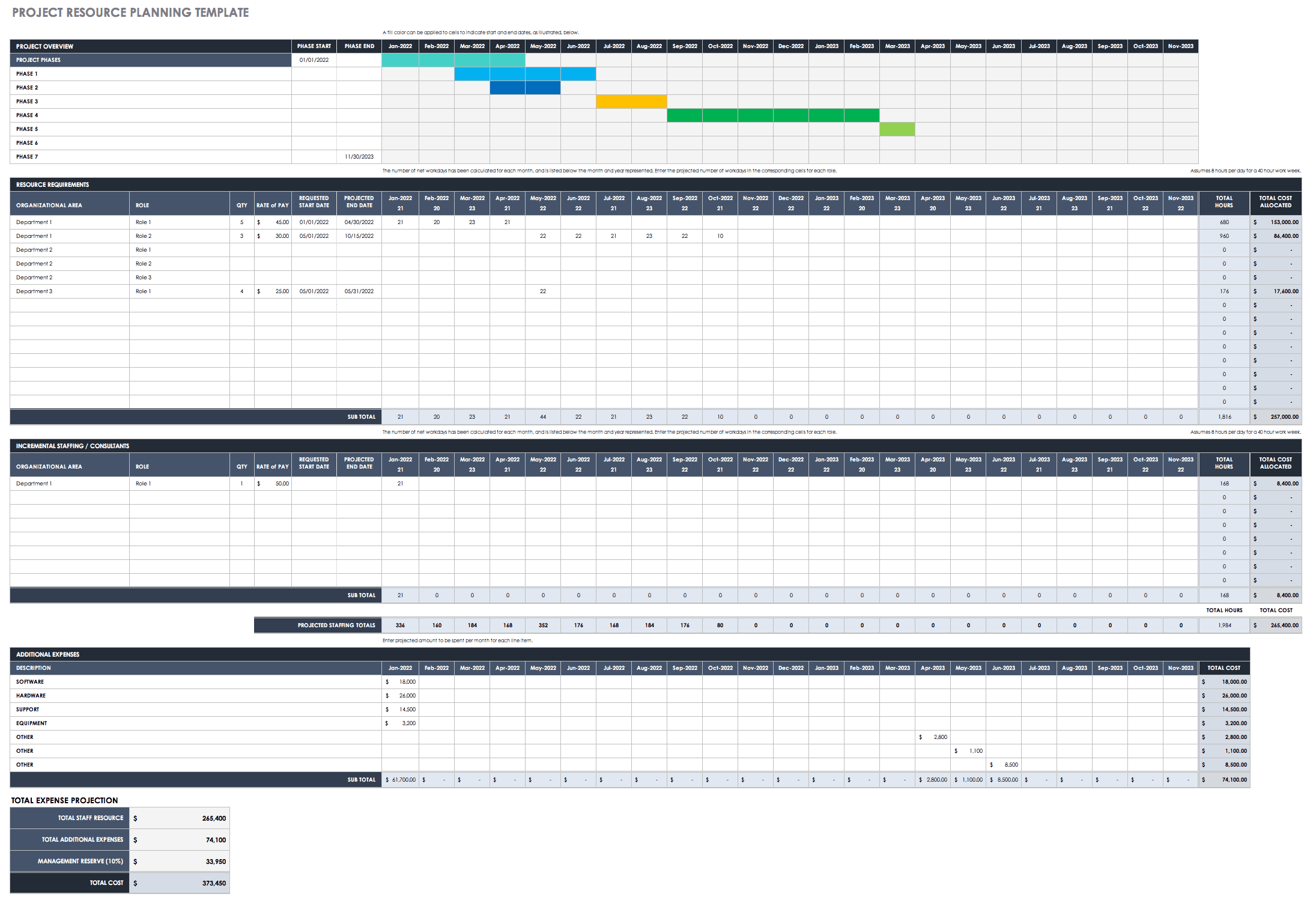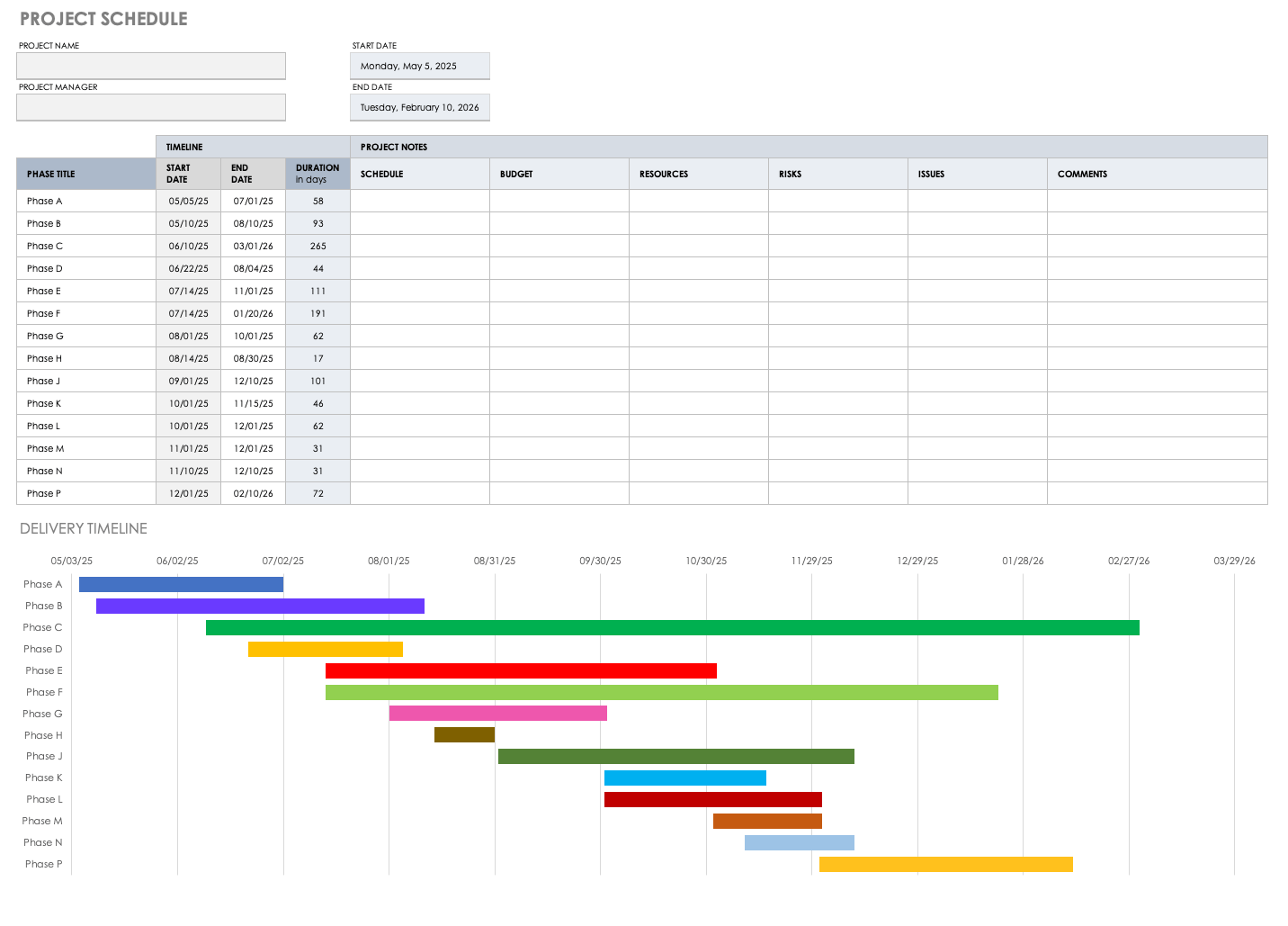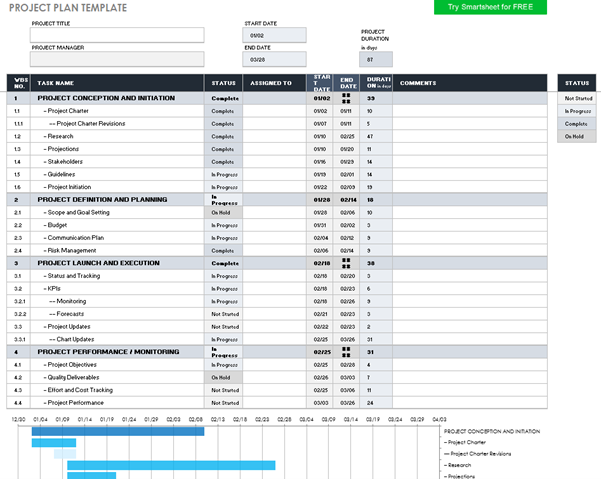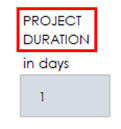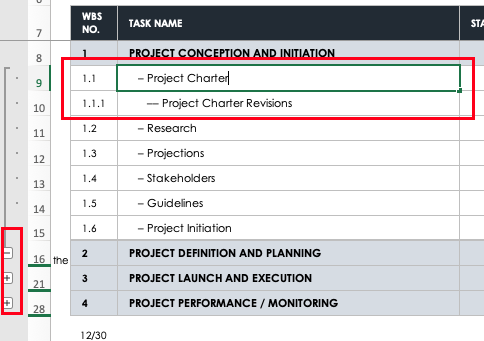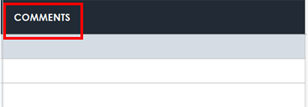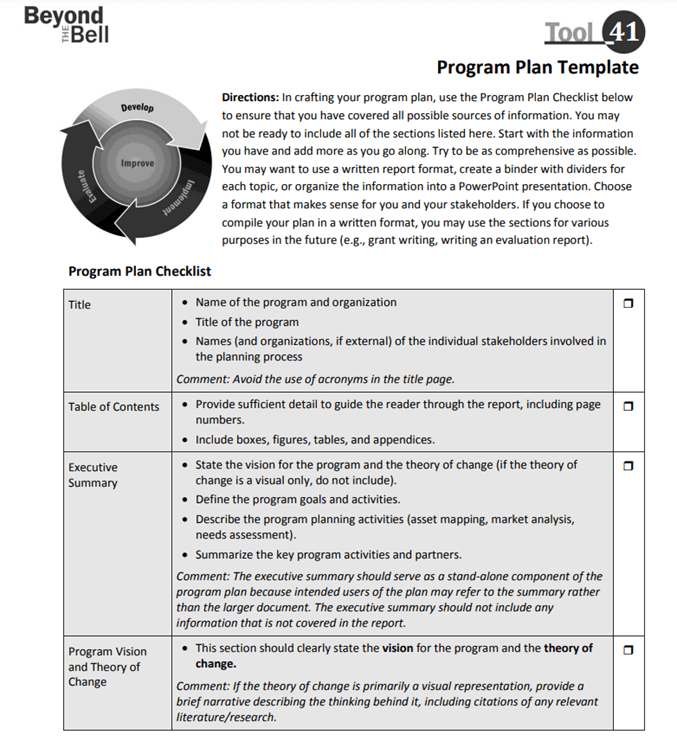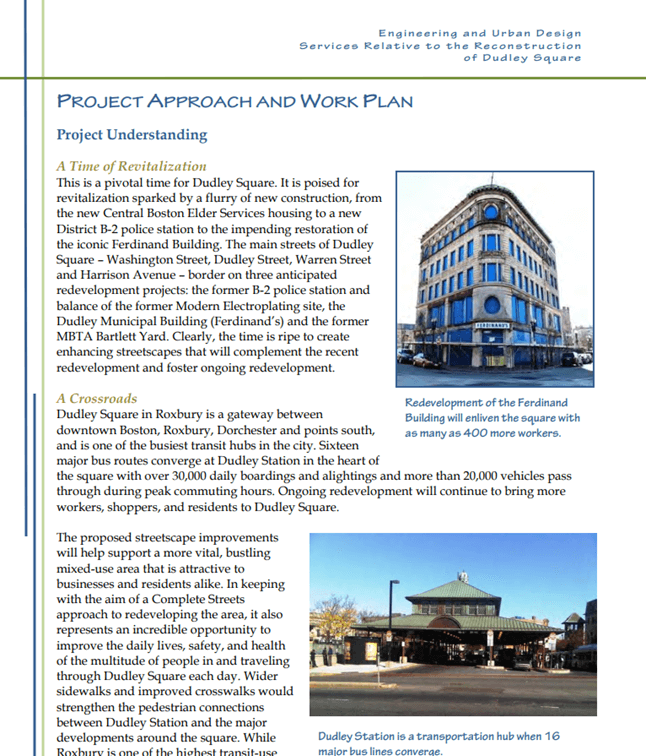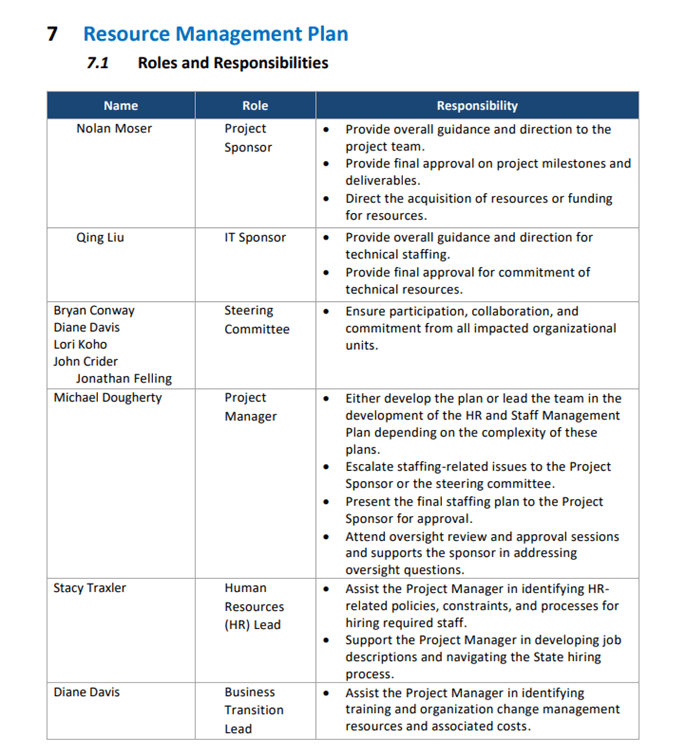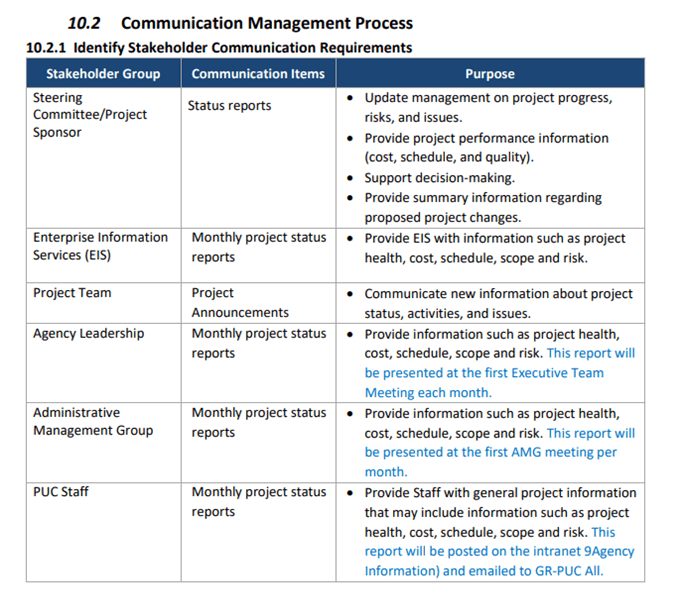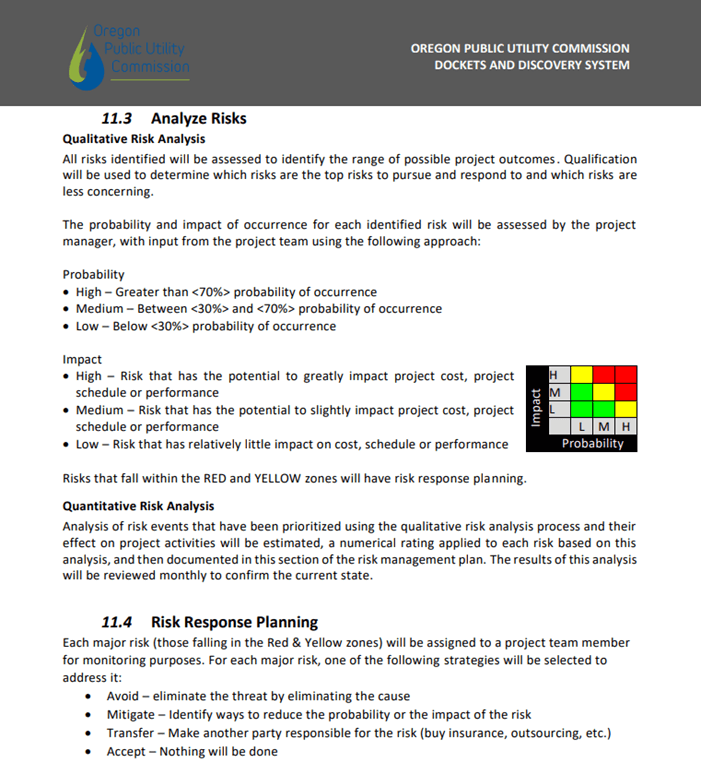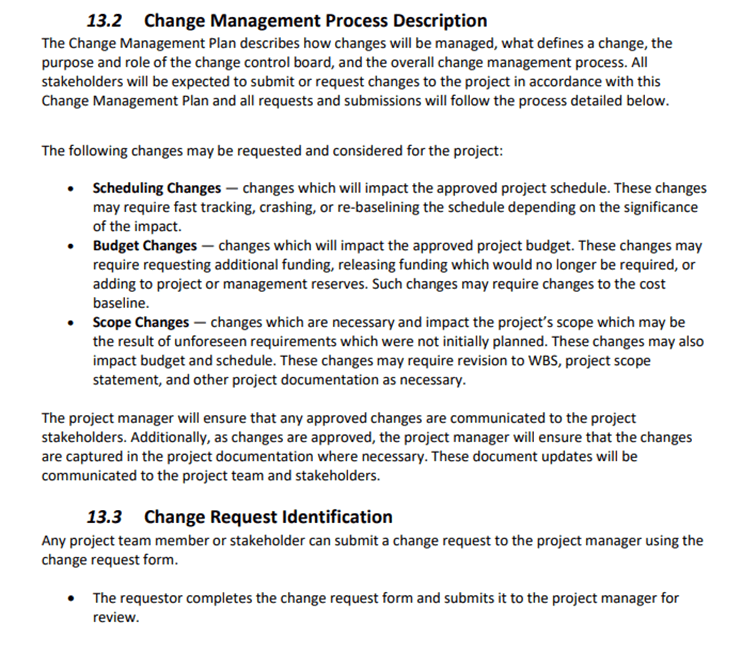What to Include in a Project Plan
A project plan, also called a work plan, outlines the tasks, resources, and timelines for achieving a goal. It defines project scope, outlines deliverables, identifies stakeholders, assigns roles, identifies success metrics, determines the framework, and manages resources, quality, and change.
Try the Smartsheet Project Plan Template
A simple, best practice approach for managing the work required to initiate, plan, and launch your project.
Initiate, plan, and launch a wide-range of projects with this complete template solution in Smartsheet. Use the task tracker template with a Gantt chart to start creating and assigning tasks for each phase of the project. Configure automations to alert assignees when tasks are assigned or are at risk. The interactive dashboard template offers a holistic view of work you can share with key stakeholders.
Project Planning Steps
Project planning is fundamentally about balancing the goals, schedule, and resources to demonstrate control of the project’s scope. Part of writing a project plan includes creating an overview and a scope statement, determining the deliverables schedule, and defining a budget. You’ll want to gather a risk management strategy, a communication plan, and any other documents the project needs.
1. Set SMART Goals
Every successful project plan starts with setting a project goal: the expected outcome. The goal will become part of the project plan’s executive summary. A specific, measurable, achievable, relevant, and time-bound (SMART) goal aligns everyone involved, establishes focus, and provides direction. Meet with stakeholders to ensure the goal aligns with business objectives and gain a thorough understanding of their expectations.
Examples of SMART goals for a project include the following:
- Launch two major product features by the end of the year. Measure progress using milestone completion.
- Reduce employee turnover rate by 20 percent within one year. Measure turnover rate and conduct exit interviews to identify reasons for leaving.
- Build two office locations in the metro area within the next four years. Measure progress using milestone completion.
Download the SMART Goals Worksheet forMicrosoft Word
Download the SMART Goals Worksheet for Microsoft Word
Use this SMART goals worksheet to detail the five characteristics of effective goal setting, specific to your project. Once complete, it provides a clear direction of what your project will achieve, how you will measure its progress, and the time it will take to complete.
Learn how to write SMART goals and see examples to get started.
2. Define the Project Scope
Your project scope sets the project’s parameters (the size) and safeguards against unrealistic expectations and conflicting interests throughout the project's lifecycle. It also prevents scope creep, such as doing unnecessary work, overspending, or missing deliverable due dates.

Download a Project Scope Statement Template for
Excel
|
Microsoft Word
|
Adobe PDF
Use this project scope statement template to list project deliverables and tasks, along with the project stakeholders and their roles. The template serves as a resource for stakeholders and team members, particularly in the event of change requests.
A project scope generally includes the reason for the project, the goals, deliverables, tasks, a work breakdown structure (WBS), assumptions, constraints, and costs. Here are a list of actions to consider when defining the project scope:
- Outline the Deliverables and Tasks: Deliverables are the tangible results of individual tasks. They can include reports, prototypes, proposals, meetings, and designs. Collaborate with managers and department leads to ensure deliverables are achievable within specific timeframes and the proper resources are notated.
- Include a Work Breakdown Structure (WBS): A WBS breaks down deliverables into smaller tasks, making the project more manageable. Use it to visualize the entire project in hierarchical steps. List the tasks and assign responsibility for each one. This creates accountability and ensures every task is completed. Read this guide on work breakdown structures to learn more.
- Estimate Costs: Allocate costs to each task based on research, data, and past experiences. This information will support budget decisions. Create a project budget to show how funds will be allocated, and include room for unforeseen circumstances or emergencies. Share the budget with stakeholders so they have a clear understanding of the project’s financial details.
- Identify Key Stakeholders and Assign Roles: Stakeholders include anyone involved in the project, such as sponsors, investors, executives, managers, contractors, vendors, consultants, project managers, and team members. It’s important to identify stakeholders, their roles, and their responsibilities, because they are a resource for questions, approvals, change management, and anything that impacts the project’s scope.
- Project Governance Structure: A project governance structure establishes a structured path for project supervision, delineating hierarchical responsibilities for project oversight. For example, in the event of a financial change request, consulting the governance structure provides clarity on who is responsible for approving or denying the request.
3. Define the Success Metrics
Success metrics gauge progress to help determine if a project is on track to meet its goal. You can measure success by looking at cost performance, resource utilization, or the progress of tasks against the project schedule. Here is a list of common project planning success metrics:
- Cost Performance Index: Indicates if the project is staying within budget.
- Cost Variance: Indicates how much the project is over or under budget.
- Customer Satisfaction: Looks at the customer’s level of satisfaction with a product or service by using surveys and online reviews.
- Earned Value: Evaluates the amount of work that’s completed compared to what was planned to be completed at any specific time.
- Quality Metrics: Indicates whether the project is meeting quality standards.
- Risk Metrics: Lists the number of risks identified, risk response effectiveness, or risk impact assessment.
- Schedule Variance: Indicates whether the project is ahead of or behind schedule at a specific point in time.
- Team Satisfaction: Evaluates the team’s level of satisfaction working on the project, as measured by engagement, efficiency, and well-being.
4. Determine the Project’s Methodology
The methodology is the process framework of your project. It can look different depending on the project’s flexibility, timeframe, type of work, and complexity. Learn more about project frameworks.
Popular Project Frameworks
Learn the differences between Agile, Scrum, Waterfall, and Kanban.
5. Gather and Manage Project Resources
Secure resources you need to complete your project in advance to avoid scrambling midway. Resources include people, finances, technology, tools, equipment, and knowledge. Gather input from your team about the resources they require for executing their assigned tasks.
Download the Project Resource Planning Template for Excel
Use a project resource planning template to list resources, their cost, and where they are needed in the project’s lifecycle. Enter the hours and cost of each resource. The template will auto-populate the totals.
6. Create a Project Schedule
A project schedule organizes tasks, sets expectations, and tracks progress. When you create the schedule, plan for unexpected delays, team members’ time off, holidays, and more. Include a timeline for each deliverable to keep the project moving forward. Adding milestones will help with building momentum, motivating the team, and monitoring progress. Store the schedule in a central location so that everyone involved can view the project’s status at any given time.
Download a Project Schedule Template for
Excel
|
PowerPoint
| Google Sheets
Use this customizable project schedule template to create a visual map of your project’s tasks and phases. The template will use any dates you add to the matrix to create a color-coded Gantt chart.
7. Implement Risk Management
Every project will encounter risks. Risk management is a proactive approach for keeping your project on track and mitigating the impact of risks. Learn more about project risk management and the importance of being prepared rather than ignoring the potential disruptions.
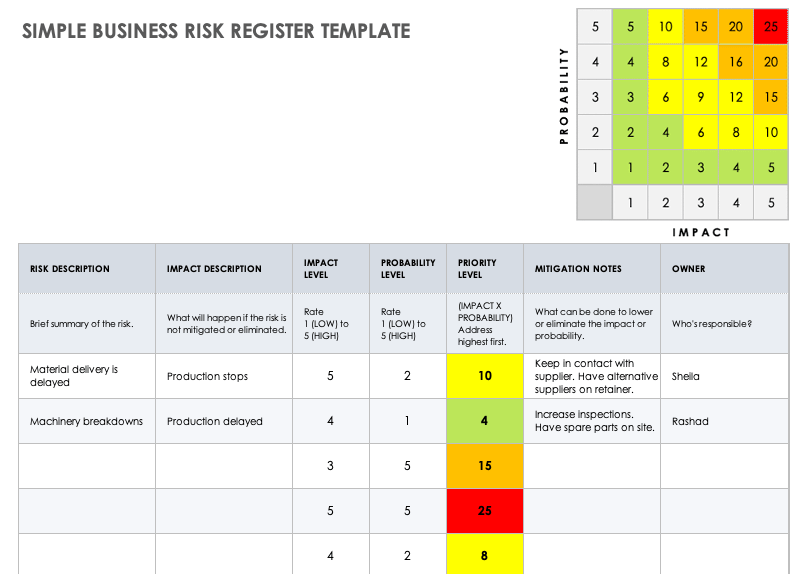
Download the Simple Business Risk Register Template for Excel
Use a risk register template to identify risks, their impact, probability, impact, and mitigation notes.
8. Implement Quality Management
Quality management guarantees adherence to standards, consistency, and continual improvement, which is essential for meeting stakeholder and client expectations.
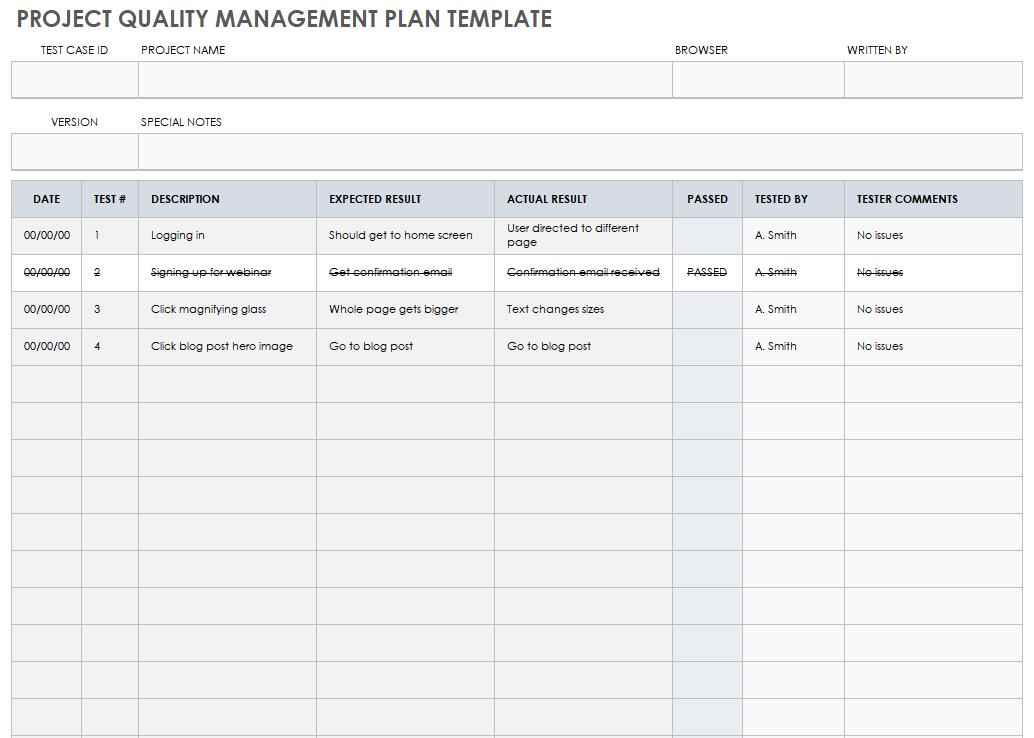
Download a Project Quality Management Plan Template for
Excel
| Google Sheets
Use this template to document quality issues that could arise within the project. Enter quality descriptions, expected and actual results, who tested them, and whether the issues pass quality controls. Collecting and documenting this information helps regulate the project’s quality standards.
9. Develop a Communication Plan
Meet with your stakeholders to learn what information they want to receive and how often. Then, create a communication plan to establish how and when to share updates with stakeholders. The plan includes a list of key stakeholders and team members, their contact details, and when to send project updates. Not all stakeholders require the same level of engagement. For example, an investor won’t require details about every project deliverable, but they will want to be informed about budget or cost changes.
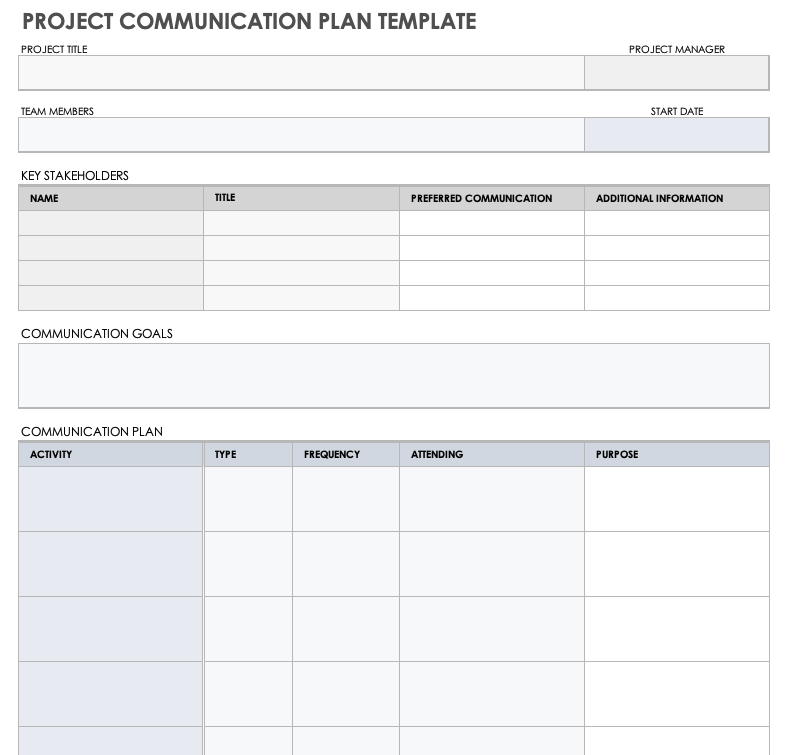
Download a Project Communication Plan Template for
Microsoft Word
|
Adobe PDF
| Google Docs
Use this project communication plan template to document your key stakeholders’ details and preferred contact style and frequency. Enter your communication goals and customize the plan to fit your needs and be sure to communicate with them regularly.
Gianluca Ferruggia, General Manager at DesignRush, oversees numerous complex digital projects. Project planning forms a significant aspect of his role to achieve successful outcomes. Ferruggia advises, “Maintain crystal-clear communication at all stages. For instance, when we rolled out our new agency search feature, we ensured that everyone involved knew their responsibilities, timelines, and how their work tied into the larger project.”
10. Write and Share a Project Summary
Anyone should be able to understand the project plan through a well-crafted project summary. The one-page document explains the purpose of the project plan, the goals, schedule, budget, resources, risks, expected outcomes, and any recommendations.
Write your project summary at the end of your project planning to guarantee all relevant information is included. Once complete, share it with the team and key stakeholders.
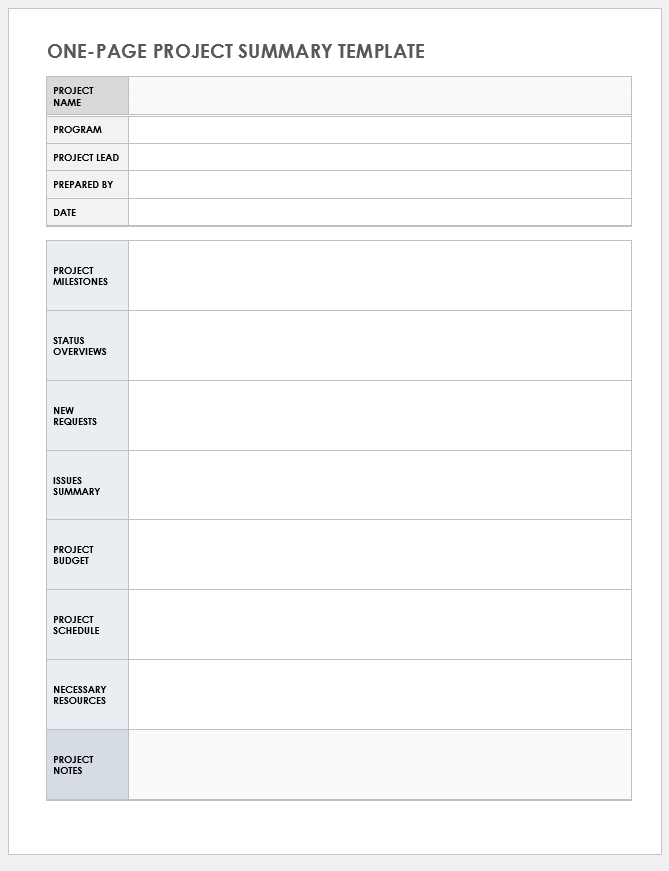
Download a Project Summary Template for
Excel
|
Microsoft Word
|
Adobe PDF
Download and complete this project summary template to provide a project overview to team members and stakeholders. Enter project milestones, budget information, schedule, and more. Customize the sections to fit your project needs.
Project Plan Starter Kit
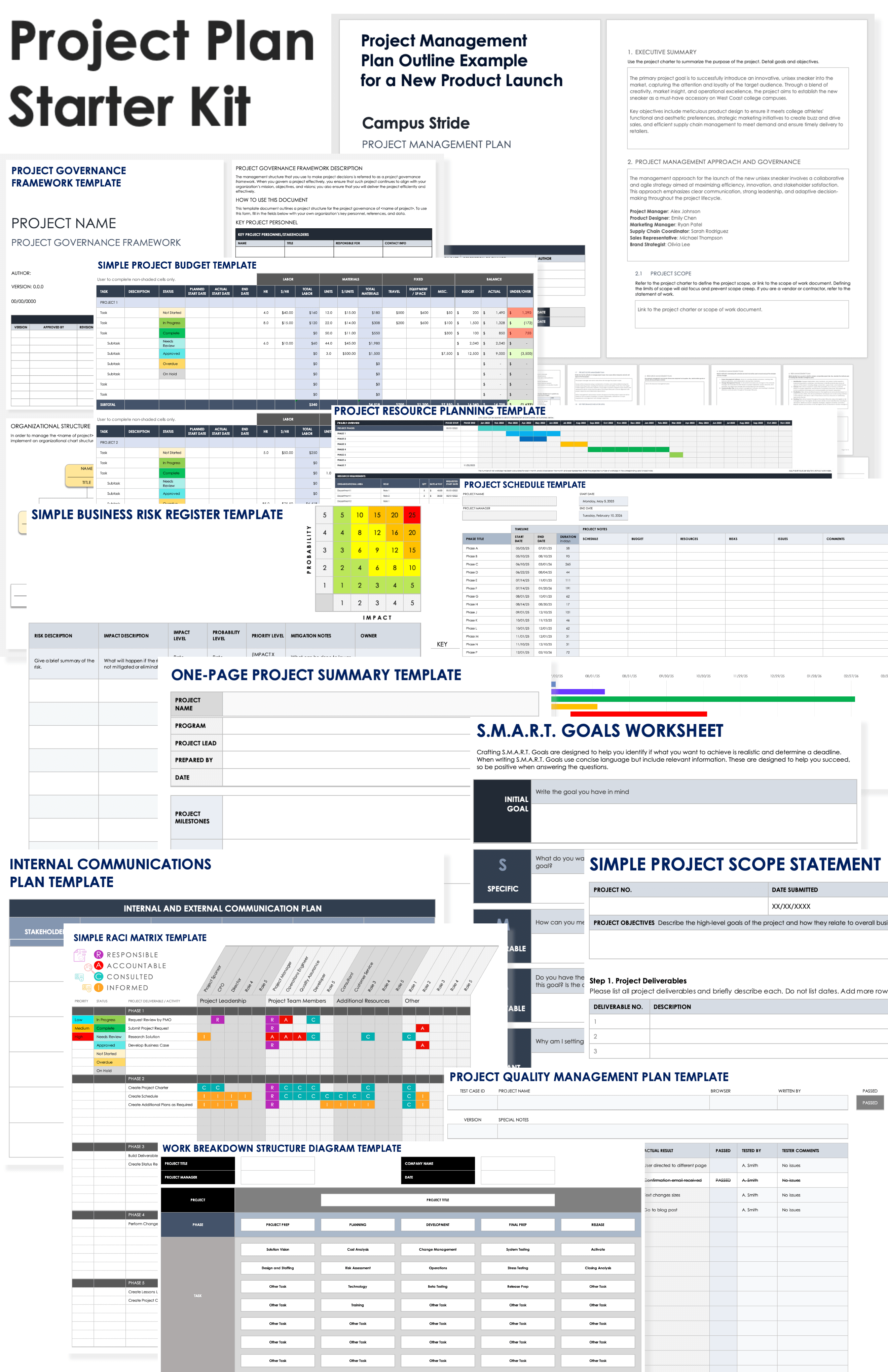
Download Project Plan Starter Kit
In this free starter kit, you’ll find customizable templates for every project planning step. Together, these documents form the foundation of a solid project plan and will help get your project off the ground.
In this kit, you’ll find the following:
- A project plan outline template for Microsoft Word for one complete document that includes all elements of a project plan.
- A SMART goals worksheet for Microsoft Word to help you define the project goals.
- A project scope statement template for Microsoft Word to help you control the project’s boundaries.
- A WBS tree diagram template for Excel to organize the project deliverables and their tasks in a hierarchical format.
- A project budget template for Excel to organize and track project costs.
- A RACI matrix template for Excel to list whether stakeholders are responsible, accountable, consulted, or informed.
- A project governance structure template for Microsoft Word to define a clear line of authority over project decision-making.
- A project resource planning template for Exce to identify, secure, and manage resources.
- A project schedule template for Excel to track and manage the project’s progress.
- A business risk register template for Excel to plan for risks that could negatively impact the project’s scope.
- A quality management plan template for Excel to ensure the project adheres to standards.
- A project communication plan template for Microsoft Word to document your key stakeholders’ contact details and their preferred contact style and frequency.
- A project summary template for Microsoft Word to provide a project overview to team members and stakeholders.
How to Create a Project Plan Step-by-Step
Creating a project plan helps you set a schedule that you can monitor to ensure a project is on track. Use a template and fill in key details, tasks, start and end dates, and status.
- Download and Open a Project Plan Template
Download the project plan template for Excel and save it using your preferred file naming convention.
- Enter Project Details
Enter the Project Title, Project Manager, Start Date, and End Date in the dedicated sections. The Project Duration automatically populates based on the start and end dates.
- Enter WBS No. and Task Name
Click the plus sign in the margin to expand the sections for the main elements of the project plan. Change pre-entered information by double-clicking in the field, deleting existing text, and entering new text. Enter each WBS No. and its corresponding Task Name in sequential order.
- Enter Assigned To, Start Date, and End Date
Enter the name of who is assigned to each task, along with the task’s start and end date. The Duration field automatically populates based on the start and end dates, and the task’s timeline will automatically populate the bar chart.
- Enter Task Status
Click the drop-down arrow in the status column and select Not Started, In Progress, Complete, or On Hold.
- Enter Comments
Enter comments about the task or timeline that benefits other teams members or stakeholders.
Looking for a different template format? Check out one of these free project plan templates.
Examples of Effective Project Plans
Project plans serve as a project’s blueprint. Reviewing examples of project plans from other organizations can provide guidance and inspiration.
Program Project Plan for Learning Programs Example
Beyond the Bell is a nonprofit organization that provides family resources such as childcare assistance, credit counseling services, and afterschool programs. The group uses a program plan template to develop, implement, evaluate, and improve its programs. This program plan template from Beyond the Bell provides a thorough checklist to ensure all project plan elements are covered. It also includes a goal-setting worksheet and a logic model planning tool for documenting inputs, outputs, and expected outcomes.
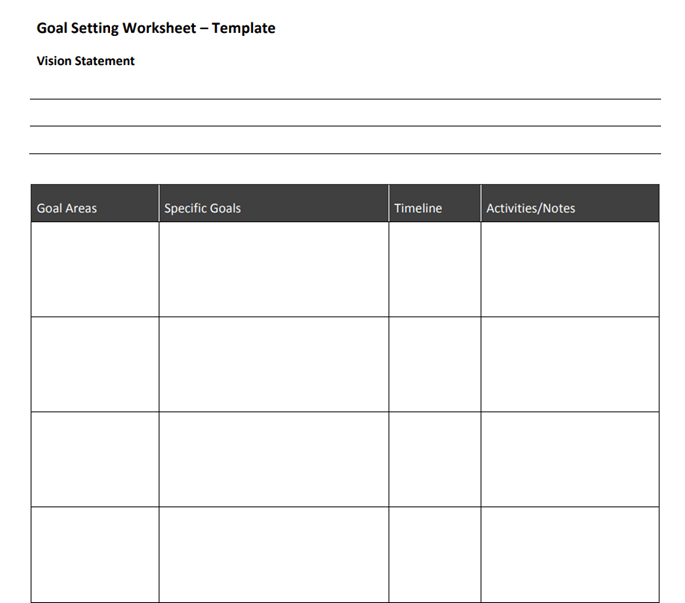
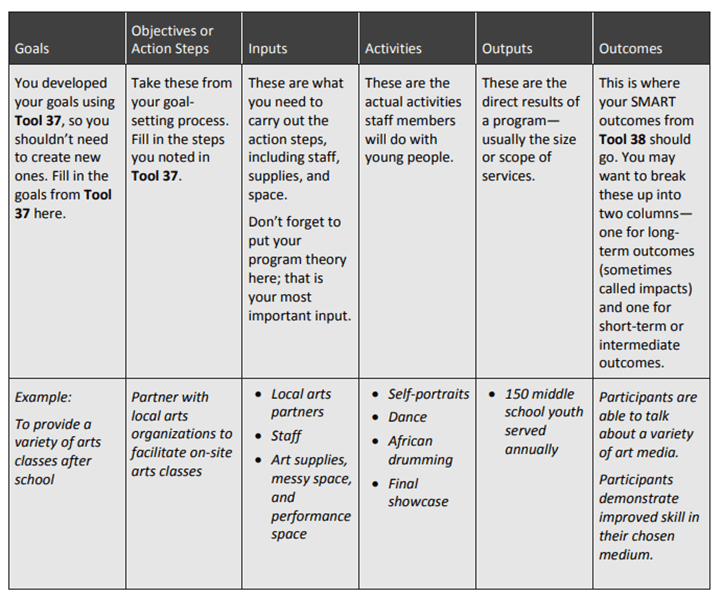
Project Plan Redevelopment Example
This real-world example from the city of Boston’s redevelopment of Dudley Square demonstrates a thorough work plan, including project tasks and deliverables. You’ll also find a meeting schedule and a project governance structure that demonstrates the importance of streamlined communication when planning a large-scale project.
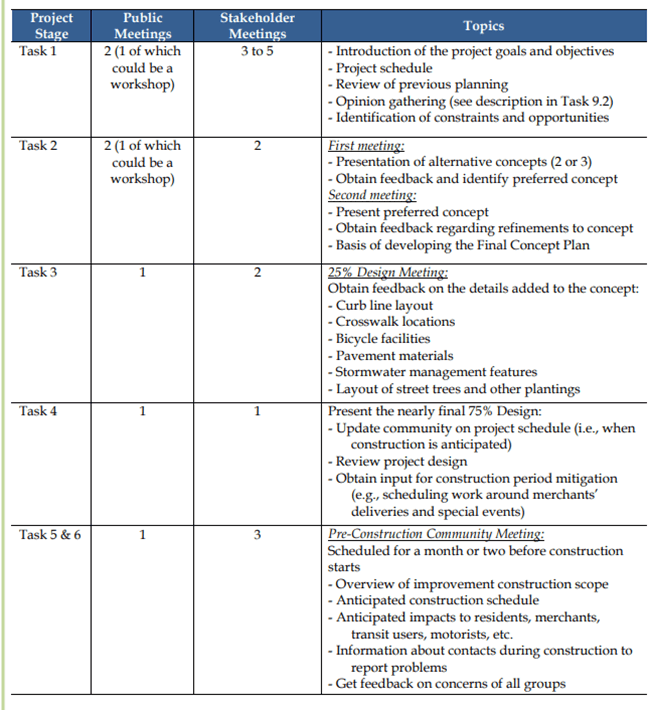
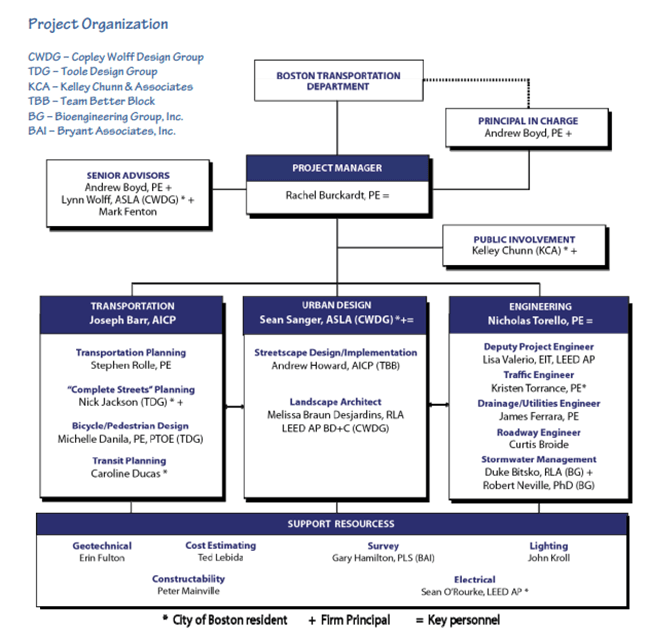
Simple Project Plan Example

Download the Sample Simple Project Plan Template for PowerPoint
When to Use This Template: This easy-to-use template is ideal for project managers to organize and present their project deliverables and timelines. Download this template with sample copy as an example of what to include in your project plan template.
Notable Template Features: This template features a one-year timeline with colored duration bars to represent how long each deliverable will take. The Today indicator makes it easy to see the status of tasks (complete, in progress, or upcoming) at a glance.
Project Management Plan Outline Example for a New Product Launch
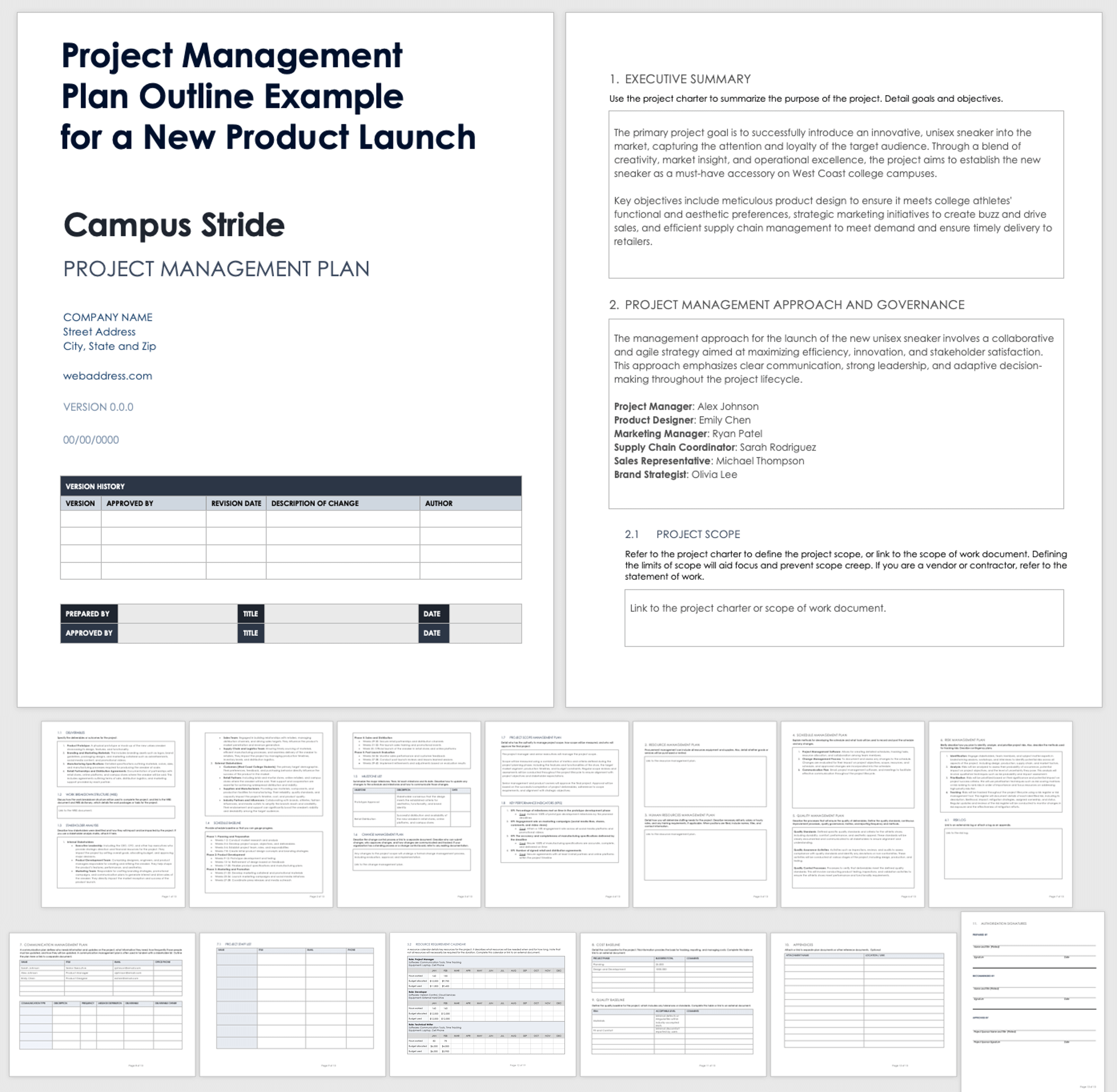
Download the Sample Project Management Plan Outline Template for Microsoft Word
When to Use This Template: Use this template if you are a project manager who needs to detail all areas of a project plan.
Notable Template Features: This comprehensive outline template features a narrative-style format providing space to enter details for each element of a project plan. Use the table of contents for easy navigation to specific sections.
Best Practices for Writing a Good Project Plan
Writing a good project plan begins with good organization and involving the people needed to complete the work. Experts recommend getting buy-in from your team, communicating with them clearly and often, and being adaptable so you can handle challenges as they arise.
Follow these best practices for writing a great project plan:
- Reference the Project Charter: The project charter is a document that introduces the project to stakeholders. It explains the project’s purpose, its goals, and how you plan to achieve them. Use the project charter as a reference to ensure the plan stays true to the project’s purpose. Learn more about project charters and why you need them.
- Recruit the Right Team Members Early: Identifying stakeholders and key players for the project upfront will mitigate risk and delays. Do a deep dive of who to involve for every phase, deliverable, and task. You do not want to be halfway through a project and realize you need a team member who is unavailable or a vendor who is not within your budget.
- Communicate Consistently and Effectively: A lack of communication during project planning can lead to failure due to uninformed stakeholders and team members lacking direction. It’s important to share the project’s purpose, its goal, and who is involved and their responsibilities. The more you communicate with the team initially, the smoother the project planning.
Jason Woo, Founder and Owner of Able Hardware, has more than 20 years of experience delivering top-quality products globally. He adds, “Communicating with your team about their roles, the project’s progress, and potential hurdles ensures smooth execution. During our expansion to over 60 employees, regular updates and team meetings were crucial.” - Expect Change and Be Adaptable: Anticipating changes in a project, such as overspending or missing a deadline, will help you prepare for when a project gets off track. Being adaptable also means you’re prepared to make adjustments. Though not traditionally part of a project plan, completing a change management template that outlines how to process, assess, manage, and track changes before a project starts is a good idea. It’s impossible to plan for every project adjustment, so a project’s success often relies on your team’s adaptability to change.
- Involve Your Team: Meet with your team before the project starts, and get their input and buy-in during the planning process. They might have valuable insight or ask questions that surface important details.
Kolyanne SK is an entrepreneur, life coach, and the Founder of Pinch of Attitude. She recommends involving team members from a variety of positions to gain different perspectives, especially the ones putting in the groundwork. She shares, “We had to develop a new link-building strategy. Before we got started on this project, I asked my team what they knew about this topic, their suggestions, and which aspects of this project they thought they could contribute to. I received in-depth responses on the strategies they knew and even gained a couple of new ideas from them.”
Use Smartsheet Project Management Tools to Create and Implement Your Project Plan
Empower your people to go above and beyond with a flexible platform designed to match the needs of your team — and adapt as those needs change. The Smartsheet platform makes it easy to plan, capture, manage, and report on work from anywhere, helping your team be more effective and get more done. Report on key metrics and get real-time visibility into work as it happens with roll-up reports, dashboards, and automated workflows built to keep your team connected and informed. When teams have clarity into the work getting done, there’s no telling how much more they can accomplish in the same amount of time. Try Smartsheet for free, today.



